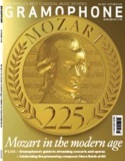Texte paru dans: / Appeared in: |
|
|
Outil de traduction (Très approximatif) |
|
|
Reviewer:
Edward Breen
Previously, on last year’s album ‘Cantate Domino’, I found the Sistine Chapel Choir reminiscent of Westminster Cathedral Choir under George Malcolm. This new recording is different, partly due to the broader style of the Mass, and partly due to a cleaner, less mannered performance from the choir. The clarity previously employed only in Lassus’s Magnificat is found throughout Missa Papae Marcelli with delightful results. However, less convincing are several speed-changes that colour this performance. Palombella boldy flies in the face of prevailing performance styles with several changes of tactus, argued on the basis of notational evidence; but, coupled with cumbersome ritardandos, these often sound overly manicured. At the start of the Gloria, for instance, tempo shifts close together at both ‘Adoramus te’ and ‘Gratias agimus tibi’ make for an unexpectedly fussy texture.
The motets, which follow the Mass,
contain four premiere recordings and continue the broad, solid vocal sound of
the Mass. This is what Palombella calls the ‘basilican’ sound, modelled on the
original St Peter’s Basilica, whose vaults the choir once filled. At the end of
the album the choir move from their usual recording position in front of the
altar to the famous choir gallery for the Ave Maria. In this last motet they
also use falsettist countertenors, whose tone noticeably lightens the overall
texture and helps to find a more intimate quality. This result is fascinating:
the sheer sense of height and depth of the building is considerably enhanced and
suddenly the polyphony is soft-focus. |
|




